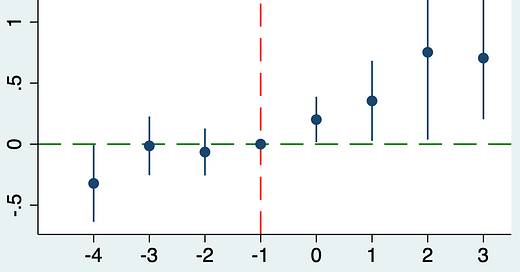The productivity problem of Chinese companies
One of the persistent mysteries of Chinese stock markets is why they haven’t performed strongly even though the country’s GDP has grown so much. I have written about some of the reasons behind this here. Still, Lee Branstetter and Guangwei Li have published a study that points to an additional factor: Chines companies are simply unable to increase their productivity.
They looked at listed Chinese companies that received government subsidies and incentives in an effort to promote the Made in China 2025 goals. As a reminder, Made in China 2025 was an initiative introduced in 2015 to make Chinese manufacturers global leaders in the technologies of the 21st century like robotics, new energy vehicles or digital manufacturing. If you are interested in how that puts China on a collision path with Western high-tech nations and increases geopolitical risks, you can read about it here.
Essentially, what the Chinese government did was help companies throw money at the problem to increase investment in research and development (R&D). This did indeed happen. Companies that received money from the government increased their R&D relative to sales.
R&D intensity after receiving Made in China incentives
Source: Branstetter and Li (2022)
But total factor productivity did not budge at all despite the investments in R&D.
Total factor productivity after receiving Made in China incentives
Source: Branstetter and Li (2022)
This non-effect of investments is because labour productivity declined after the companies received the incentives. I have no idea why that is the case. It looks like a case where companies invest in R&D and new technology but do not have enough qualified employees to use the latest technology and run them efficiently. While the machines may be brand new, the workers are wasting the productivity advantage by not running them properly. But that is just a guess.
Labour productivity after receiving Made in China incentives
Source: Branstetter and Li (2022)






